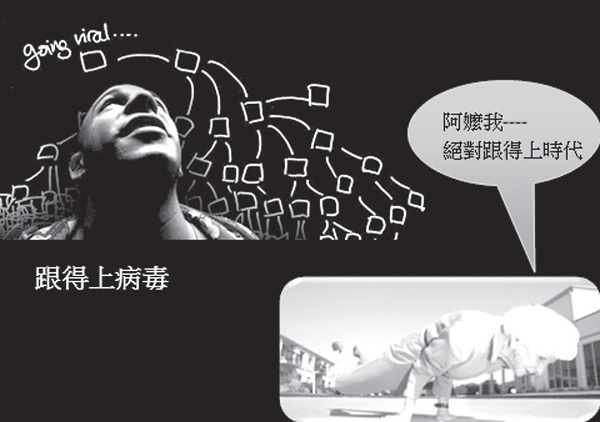Creative recycling: Re-creation of online communities (Part 1)


▲"The world in the future will not be ruled by force, but by creativity." — Yukiyuki Matsushita.
"The world from now on will not be ruled by force, but by creativity."
This is the famous saying of Konosuke Matsushita, the founder of Japan's Panasonic Electric Co., Ltd. and known as the "God of Management." When he said this, the www (World Wide Web) had not yet appeared, and he did not see the current situation of the Internet. But a year after he said these words, in 1990, www officially entered the stage of human history. In less than thirty years, creativity, which originally belonged to a few people, suddenly became like sand on the Internet. A lot.
In the era before the Internet, when people talked about creativity, usually many people would immediately turn themselves in and say, "Oh! I'm not that kind of person, I'm not creative!" Now among the Internet natives (post-80s generation), They rarely say whether I have any ideas. They just keep sharing ideas, discussing ideas, and evaluating ideas. Because of the Internet age, creativity not only gets the right to serve, it is basically the jersey. If you don't wear it, you don't want to go out and play.
I naturally love to create, my mind keeps spinning, and I love to share with my children any sky beyond the "normal box". When they were young, being a creative and imaginative mother really had a lot of advantages, and she could always enlarge the children's Eastern eyes. But, I don’t know since when, the situation changed. I excitedly told my children that so-and-so was so creative, but what they heard was a straight line:
"Oh! I've seen many people use that idea online!"
"But mom, that's a copy of so-and-so, don't you know? So-and-so is very popular!"
They raised their heads and looked at me, not only did they not have admiration in their eyes, but they also had pity in their eyes. It breaks my heart!! My fashionable creativity turned into a retro action in the eyes of my children?! How could this happen? How could this be?
That's right! After the Internet provided a shortcut for publication, all kinds of creative masterpieces finally found a free stage, and they could self-recommend themselves without waiting for a talent. So every day when the Internet comes online, new ideas stand on the stage and show off, taking turns to seduce the eyes of netizens.
And young people are enthusiastic about cheering everywhere! Of course, there is a body in the virtual world that automatically peels and reskinned. Those pages that are not updated fast enough are like a woman’s failed laser skin resurfacing. There are lots of old spots under the new and tender skin, which always makes people feel like their face is not clean. The eyes of young netizens are always attracted by those innovative and fresh faces. If they don't appreciate it enough, they still want to spread the word and share it with others.
In the past, we talked about "keeping up with the times", but now, young people talk about "keeping up with the virus" (the English word for "go viral" is go viral, which means it sells so well that it spreads like a virus). Even if you have no creativity, you can still Keep up with popular ideas.

▲Today’s young people call “going viral” (keep up with the virus).
Therefore, the new Internet generation has a much broader view of many creative ideas than the old generation. Creativity is really a kind of speed in their world. They can think of it, do it, and publish it quickly.
In the past two years, I have asked many people—old, young, new Internet immigrants, and Internet natives—the same question: "Do you think the Internet has made you more creative or less creative?" My eldest daughter came back from school during the winter vacation. She is studying literature at UC Berkeley. I asked this question and she said, "Mom, the correct way to say it is: the Internet forces us to be creative!" She was embarrassed by the word "force". Apply dramatic gold eyeshadow.
"Before the advent of the Internet, 'creativity' was an abstract concept. As long as someone was weird and had different ideas from others, he might be regarded as creative by optimistic people. Or some people felt that their methods, ideas, and If his words are different from others, he will feel creative in his own little corner."
"Before the Internet age, unless it was professional, there was no specific standard for what people called "creativity." But after the Internet age, all the weird and out-of-the-box things came online, and everyone began to discover those things that were in their own little bubbles. "Speciality" turns out to be ordinary, just like many people. Only a few creative ideas that are truly appreciated and liked will remain and be recognized. However, everyone no longer dares to say that they are creative. I began to understand that being creative is not a choice, but a direction that must be worked hard!" She patted me on the shoulder, like a teacher motivating a student after correcting him.
Can creativity be achieved through hard work?! I silently asked her in my mind.
People in previous generations believed that creativity was innate, elusive, and a talent belonging to a few people. Why would she say that creativity is an important direction for people of this generation?

▲Creation is a matter for a group of people, and it can be re-created by collecting ideas, re-deconstructing and packaging.
Looking back and sorting out the responses I have received from others over the past year, there are roughly three types:
The first way to say it is: the eyes and ears are affected by it. Since people who have been immersed in art for a long time will be more artistic, then of course Internet natives who have been immersed in creativity for a long time will be more creative.
The second view is exactly the opposite of the above. They believe that the Internet has provided too many creative ideas. Whatever you need, you can find it online and it will be ready to use. Therefore, people will become less and less creative and only know how to search and then copy. They believe that people think in poverty, create in lack, and step out of their original boxes in dissatisfaction.
The third statement: The Internet facilitates and encourages creation. Young people who are immersed in it every day are excited by the variety of creative works, and the flood of new ideas tells them: Creativity is not a patent for a few people, but an ability that everyone can possess. So they learned to collect ideas, then chew on them, work with others through collective collaboration to re-deconstruct packaging and storage, and then start over to generate new ideas that belong to this group.
This is what my oldest calls it: being forced to be creative. Creativity is not necessarily an innate trait in the Internet generation, but an ability that can be learned through hard work.
Earlier, I asked my second child, who is studying business, the same question, and her answer was simpler: "Mom, in our era, creation is not a matter of one person, but a matter of several people and a team."
Creation is a matter for a group of people, and it can be re-created by collecting ideas, re-deconstructing and packaging them.
recycling creation
What is recycling creation?
Resource recovery and reuse (or recycling) refers to collecting materials that would otherwise be discarded, breaking them down and making new products, or collecting used products, cleaning and processing them before selling them. Proponents of recycling argue that doing so reduces waste production and the consumption of raw materials.
As the concept of environmental protection becomes more and more common, the reuse of resources is no longer a matter for experts. Take a look at the many creative ideas for resource recycling, including when Master Aji taught us how to make curry chicken, we don’t have to use potatoes. Recycle the finished potato chips without adding any salt.
The significance of recycling is not only to save money and take care of the earth, but also to increase the richness of every material in the process of recycling creativity. Recycling adds value to things.
When a pair of shoes turns into a flowerpot, or a pile of wooden boxes turns into a table, no one would say that it is a copy or copy, because although the shoe flowerpot is still a shoe, with a little creativity, it has become a A brand new work.

▲Creative recycling art.
In fact, someone has long said that except for God who created the heaven and earth and all things, there is no originality in this world, but it is full of re-creations. Today, the Internet resources are abundant, but if you think about it, it is quite a waste. There are many good ideas, but they are short-lived and are overshadowed by the next new idea. There are also some good ideas that are ruined by time because they are not managed and operated well. Broken copper and iron.
I see that millennials are very accustomed to using online platforms, groups, and circles. Although they rarely start with original inspiration, they usually collect and refer to creations that have already appeared on the Internet; but through this group People, their interaction and cooperation, can often be recycled to create some good products.
This makes me see a trend in the Internet generation: it is more important to know how to recycle ideas than to scratch your head and wait for original inspiration.

▲Knowing how to recycle ideas is more important than scratching your head waiting for original inspiration.
The story of sticky notes
As a scientist in the research department, the company gave Spencer Silver the responsibility to develop a strong glue. However, after many attempts, he invented a glue that sticks on and can be easily removed without leaving any traces. s things.
He believes that this new adhesive is not a failure, but it is different from what everyone needs in the box. The problem was, he couldn't convince anyone in the company that the invention had a useful purpose. Five years later, his creativity finally found a microphone that could speak for it.
There is a colleague in the company, Artie Foley, who is a member of the church choir. The paper he used as a hymn bookmark would often fall off when turning the pages, making it impossible for him to find the hymn he wanted to sing immediately. On this day, the paper bookmark he had clipped in advance fell off again, but this time he frowned and suddenly there was a flash of light. Not long ago, I heard someone in a company seminar introduce an adhesive he invented that can be put on and taken off safely! If that thing can be placed on paper, then it won't always fall off when used as a bookmark.
The choir boy immediately contacted him, the inventor of adhesive, and worked with him to persuade people everywhere about the benefits of "Tie Tie Kan". After six years of hard work, "Tie Tie Kan" finally went on the market and brought success to 3M. There are billions of dollars in business opportunities.
Today, we call those yellow notes sticky notes. Without them in our lives, it would be really inconvenient.
This is a good example of collective creation. Scientists discovered glue but didn’t know how to use it, and it almost became an abandoned invention. Another person picked it up, and the two collaborated to re-create it and turn it into a sticky note.

▲Post-it notes make life more convenient.
Kickstarter
In 2001, Perry Chen wanted to get some of his favorite DJs from other states to perform at the next year's Jazz Festival. He contacted the DJ's managers several times, but in the end he was unable to achieve his goal because he didn't have enough money. At that time, he was disappointed and kept thinking that if he could gather some enthusiasts and spend money together, he could pay a deposit to invite them.
Raising money to do something is definitely not a new idea. What Perry wants to do is to create an online platform to let music lovers know about the opportunity to see such excellent performances and recruit people to participate in fundraising. Everyone first digs into their pockets to collect money. If there are enough people, we can enjoy such a great team together. If the money is not enough, we will refund the money at worst, and no one will suffer. This idea excited him, but back to reality, what Perry Chen wanted to do most back then was music, but he didn't take action. Four years later, he met another boy who was willing to dream up this idea. The two raised a small amount of funds from friends, but everything was still a simple sketch.
Another year later, they encountered another fire. Each time the creative carbon burned, the sketch was reorganized, the outline became clearer, and the prototype of the crowdfunding website came out. The problem is that none of the three people know how to write programs. They paid people to do it, but the results were unsatisfactory and fruitless.
In 2008, seven years after Perry Chen's original idea emerged, the last two chess pieces were finally in place. Five people were dreaming of the same dream. In 2009, when the U.S. economy had just collapsed, Kickstarter officially debuted. Kickstarter is an online crowdfunding platform. Designers and other creative talents connect with people who want to help them realize their dreams, and consumers and investors overlap. Everyone who wants to buy a certain product or watch a certain movie or listen to a certain music can potentially do so. Do your part to make your preferences a reality.
Starting from the needs of a boy, for eight years, each time someone joined, the original idea was picked up and re-created, and finally it was the joint creation of five people to make something. These five people are not classmates, nor are they in the same club. They are located in different states and cities in the east and west of the United States. However, they can still meet and communicate through the Internet, stimulate each other's creativity, complement each other, and finally create a platform like Kickstarter.

▲Kickstarter, an online crowdfunding platform.
The free space of the Internet encourages young people to transcend the existing and develop their own new ideas, new forms, and new values. The Internet platform gives them the opportunity to transcend geographical limitations, collaborate collectively, and recycle ideas into more complete creations. This is another great example of collective recycling of ideas.
In the Internet generation, we are not looking for a creative hero.
In the Internet age, we can organize many creative recycling teams.
Once upon a time, a famous person said: "I think, therefore I am." Later, in 2009, Charles Leadbeater, a British opinion leader and writer who is well-known in the world of management circles and has promoted innovation, proposed "We think together, so we exist." (We think together, therefore we exist.) think, therefore we are).
In recent years, the church has actually begun to adopt the phrase "we believe, therefore we exist." Faith has moved from the personal pursuit and experience of the past to a group life experience.
How can we walk the journey of faith together and have a common interpretation and experience of the truth? These have become the main pillars of faith that the new generation of Christians yearn for. As a result, churches became small groups and even house churches were formed. When talking about future church trends, some predict the decline of medium-sized churches and the prevalence of small churches with less than fifty people. Profound community experience is what millennial believers need. They long for church not to be a place where they go and sit for two hours every week, but a place where they can interact closely with, cooperate, and interact with people, and live together as a community of faith.
The Internet generation is a "we" generation.
Moreover, from "we think together", we have already entered the stage of "we create, therefore we are." (we create, therefore we are.). This co-creation (or collective creativity) may be a puzzle-like collaboration (collective creativity), where everyone takes out their own parts and collects them together to form a work; it may also be collaborative creation, adding and subtracting from each other. , modify, be changed, and also change the other side, dissolving into a recreated work.
Collective creation is a way to generate collective wisdom and collective strength.
The benefits of a team are actually not a new concept, but it has been particularly emphasized in this generation, and it has a lot to do with the entire Internet culture. Millennials are a generation of connections, because the Internet allows us to see clearly that we are just a small dot in a big network, and we must connect with others to form a single face.
Genesis Word Camp Training Bookstore (Chuangwen) "Come and take a bite." When this writing training team first came on stage, they opened a Facebook page. Everyone worked hard to finish their article every week. Send it out, thinking that if you send it out, you will be responsible.
But it's not. It is almost impossible for today's literati to work alone. When you post an article, you have to work hard to add Facebook friends, hoping that your relatives and friends will also connect with a large group of people, so that your article will have a chance to be truly "published". When readers come, you have to find ways to interact with them. Every time you interact with readers, the article will reappear in the new message notification Newsfeed of your Facebook friends, which is equivalent to giving your article another chance to publish.
Therefore, writing an article on a Facebook page is not an individual creation, but a collective creation. You are responsible for writing, your friends are responsible for connecting, you build relationships with readers, and readers connect more readers for you. This platform has plump and rosy cheeks.
All WeChat groups and LINE groups have the same concept. When two people in the group start to interact, the entire group will enter an interactive state, because everyone is notified that someone is talking inside, and you will click to see who said what. This kind of interaction in the online community makes people get involved with each other very frequently.
From 3R to 4C
Traditional education values the 3R abilities, namely "reading, writing, and arithmetic." The new Internet generation advocates 21st-century citizenship. Starting from school, 4C abilities must be cultivated. Right now
1. Critical Thinkingcritical thinking and problem solving
2. Communication communication skills, effective communication (effective communication)
3. Collaboration, team co-creation (collaboration and building)
4. Creativity, creativity and innovation
Just when we are afraid that the Internet natives at home who watch the screen all day long will turn into small closed castles, in their world, connection and co-creation are the norm, not a concept, but a living habit.
Every time I ask my children a question, if they are not sure, they will say: "Wait a minute, I will ask my friend." We have also said this to our parents in the past, but what we mean is: "I asked my so-and-so "Friends." But what my daughter meant was to go to my online group and post a question for everyone to answer.
Reflection on Christian CQ
Christians should actually be the most community-minded, because from the day we believed in the Lord, God did not reborn us in a separate corner, but reborn us in a spiritual community. Even if you read the Bible at home and were moved by God’s words to believe in the Lord, if you follow the teachings of the Bible, then the first thing you do after believing in the Lord, besides reading the Bible and praying, is to connect with a spiritual group.
But it is a pity that in the era of teamwork, Christians, especially Chinese Christians, often still work alone in a group, adopting the heroic and personal leadership model from the pulpit. Why?
Because when we talk about collective collaboration, the first two Cs are indispensable - critical thinking and effective communication, which are relatively lacking in our traditional education and cultural environment. To have a creative and effective collaborative community, members must learn to think critically and communicate effectively.
In the past two years, I have been leading young people whether serving in the church or in the writing team of "Chuangwen". In retrospect, the original intention is team learning, or team creation, or team service; but in fact it is very difficult to achieve true collective collaboration. We are too used to sitting in the classroom and listening to the teacher's orders. We do whatever the teacher says. We can only chat and joke with our classmates.
It’s not just putting some people together and giving them a goal and direction, and that’s called collective creation. True collective creation is the combination of the four Cs.
From IQ to EQ, the most popular one now is CQ—collective emotional intelligence, which involves working together with people in a group. Collaboration, in this Internet age, is a kind of wisdom and ability, just like emotional intelligence. Some people are naturally stronger, but they can also learn and improve later in life. I believe that Christian service, whether it is internal church building, spiritual shaping of believers; or external evangelism, taking root in culture, influencing society, and knowing how to use collective wisdom, collect collective creativity, and create collective creations are all important. is a very important strategy.(To be continued next time)
 Author profile
Author profile
Ma Ruixin is a writer. Her articles have appeared in newspapers and magazines. She was a columnist for "Cosmic Light Magazine" and "True Love Magazine" and is currently a writer for "Beijing Foundation Magazine". At the same time, I have been running an online blog for many years and have a Facebook page. He is the author of the books "The Footsteps of a Wanderer", "Managing the Family and Mind", and "The Wisdom of Discipline". "Private School Madam" blog, "Give me your sincerity" blog, "It's You" blog, and "Grab Happiness" Facebook page.
